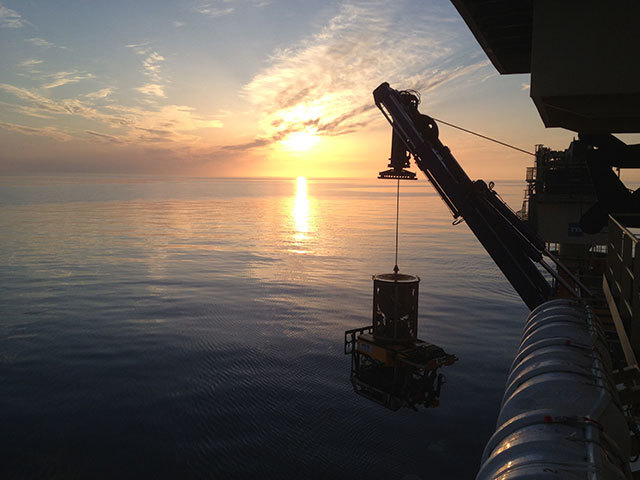
Sensor technology inspired by Bottlenose Dolphins could help extend the life of oil and gas pipelines by using ROV’s (Remotely Operated Vehicles) to detect blockages, according to new research.
The initiative, carried out by Heriot-Watt’s University’s Ocean Systems Laboratory, Hydrasun Solutions and CENSIS, will develop an enhanced wide-band sonar system based on the principles of the marine mammal’s detection capabilities.
using signal processing techniques used in previous research carried out on Bottlenose Dolphins, the project is expected to improve the range of data collected by wideband sonar devices.
Dr Keith Brown, associate professor at Heriot-Watt’s School of Engineering & Physical Sciences, said: “Bottlenose Dolphins are extremely good at detecting objects in the water – using sonar they can detect fish in the sand which can’t be seen by the eye.
“Earlier research also showed that dolphins can differentiate between the contents of a variety of filled aluminium bottles using signal processing.
“We analysed the characteristics of these signals and, using transducers, have reproduced frequencies within the same parameters: as close as possible to those created by dolphins.
“This breakthrough means our new wideband sonar system can provide its users with even greater environmental, seabed and structural detail.
“It could, for example, be used to detect a range of underwater objects, hairline cracks in oil rigs’ support legs or changes to the sediment on the seafloor.”
The technology will allow users to accurately locate underwater objects, as well as identify their structure and composition, without making any direct contact.
Existing sensor products cannot penetrate objects, instead providing only an image outline.
The system could have a variety of applications, helping surveyors to find blockages in pipeline, determining whether an underwater support is still structurally sound or identify wildlife on the seabed.
In addition to providing users with additional information, the system will be deployable on a range of nautical vehicles, including AUVs (Autonomous Underwater Vehicles) and ROVs.
Multiple surveys can be conducted from one ship, making the device an economic way of collecting data.
Chris Capus, Chief Executive of Hydrason Solutions, said: “The enhanced system has a range of potential uses, both in our existing markets and new ones. It presents us with a great opportunity in fisheries, for example, where it could be used to monitor the health of prawn beds.
“In markets where we have an established presence, like oil and gas, it can be used to detect what’s inside objects – such as checking whether an object contains hydrocarbons or other substances.
“This system will set a new standard in acoustic object detection and identification in complex subsea environments. It could also reduce the costs of expensive surveys, through a range of efficiencies and as part of a wider transition towards autonomous working.
“In many industries, acoustic surveys are going on all the time – particularly as oil rigs and other installations begin to be decommissioned. The opportunities for companies to cut costs are huge.”
Recommended for you
